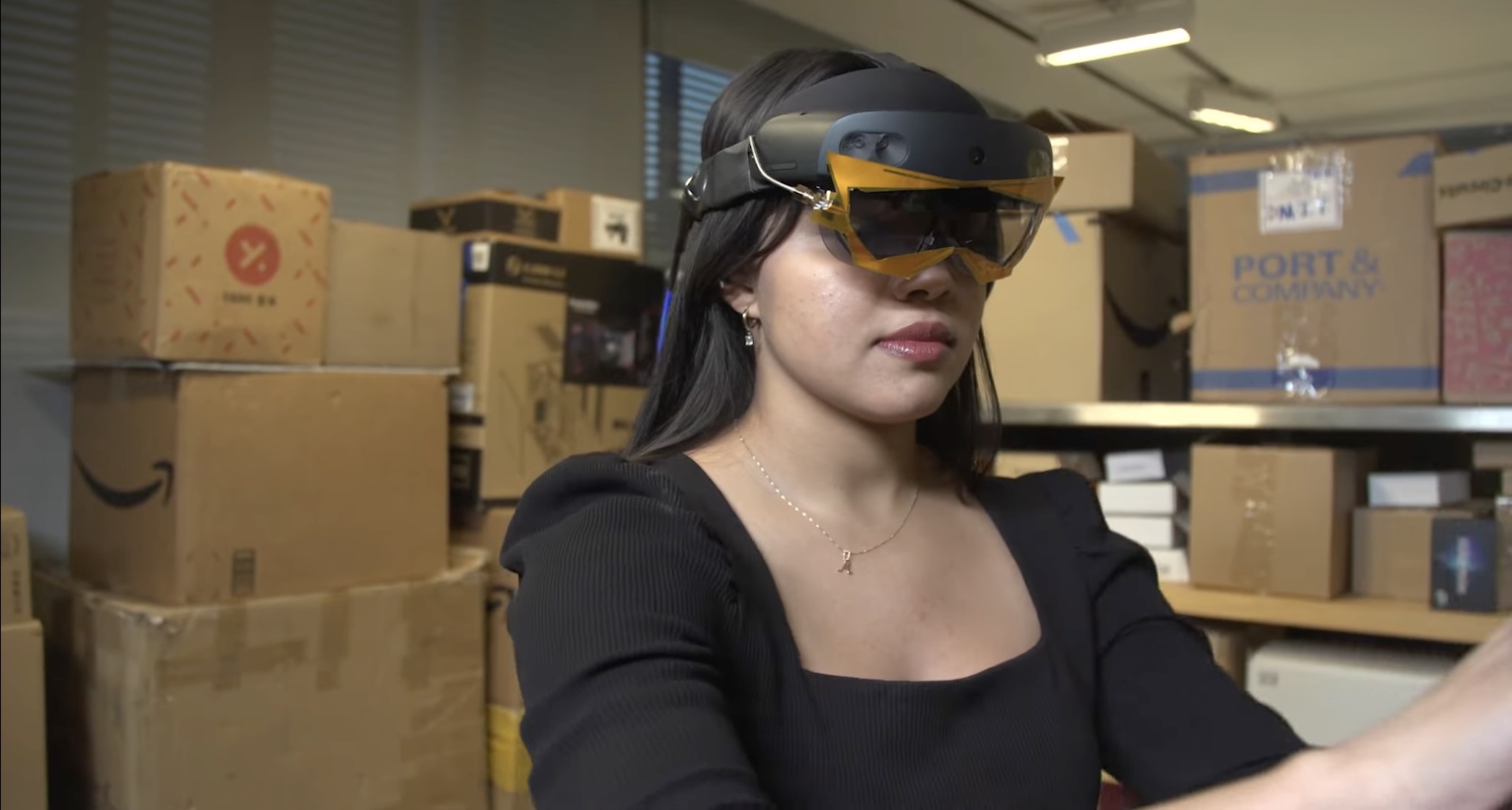X-AR (Augmented Reality with X-Ray Vision)

Creators at Massachusetts Institute of Technology (MIT) have created a new reality called X-AR. How the creators describe this new type of extended reality is Augmented Reality with X-Ray Vision.

This x-ray vision is different than the ironman x-ray vision we like describe with digital twins to show the components inside a car for example. X-AR gives users an x-ray view of physical objects that are hidden away. In the example they show above a t-shirt is stored away and the X-AR points users to the exact location of the item.
How this works is they place an antenna on Microsoft’s Mixed Reality Headset the HoloLens. The antenna is a small tape on additional to the headset and does not affect as of the existing sensors and camera. Items that are hidden include a Radio Frequency Identification (RFID). The antenna on the headset sends a signal and identifies where the hidden item is. A custom app on the HoloLens, notes where the signal bounces off from and directs users to the location of the item. Creators mention the technology “combines wireless sensing with computer vision to enable users to see hidden items.”

The technology is like how a phone and AirTags work. Creators pointed out two big differences. One is that RFIDs cost almost nothing compared to Airtags. RFIDs cost about two to three cents whereas AirTags cost about thirty dollars apiece. RFIDs do not run off a battery so they will always work, and users do not have to worry about battery power.
The use of X-AR favors the example shown in the video above. Industries such as retail, warehouse, manufacturing, and e-commerce fulfillment are the obvious applications of this technology. Researchers and creators at MIT pointed out this could be used to track human who are stuck in under a building after an earthquake. Again, unlike AirTags there is no battery supply pack, and the signal will work forever. Other use cases include the potential in medical and healthcare field to track someone’s heart rates and other key vitals.
Like all the extended reality X-AR is still early in its infancy and the more we use this technology the more use cases and applications we will come up with.







